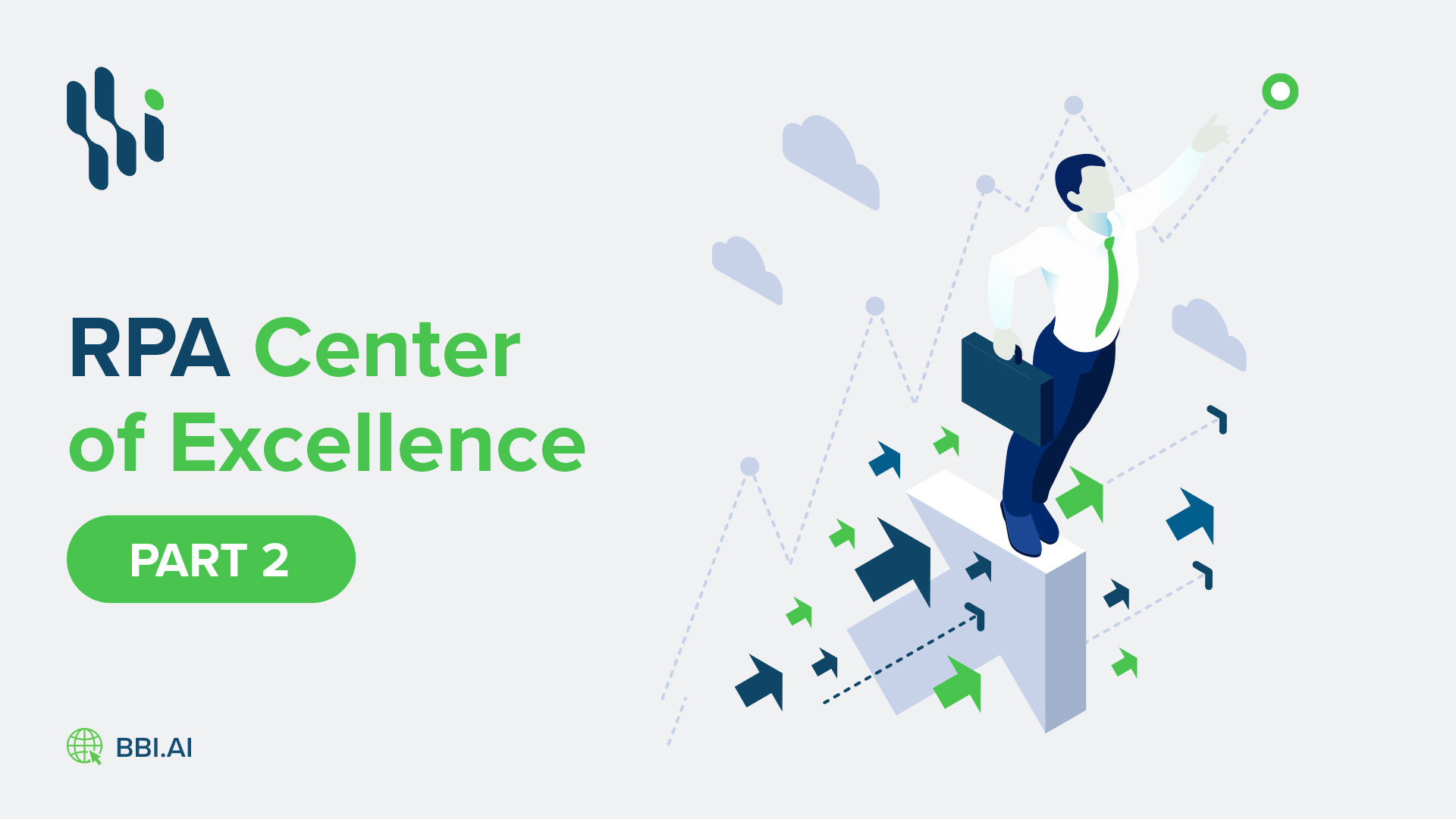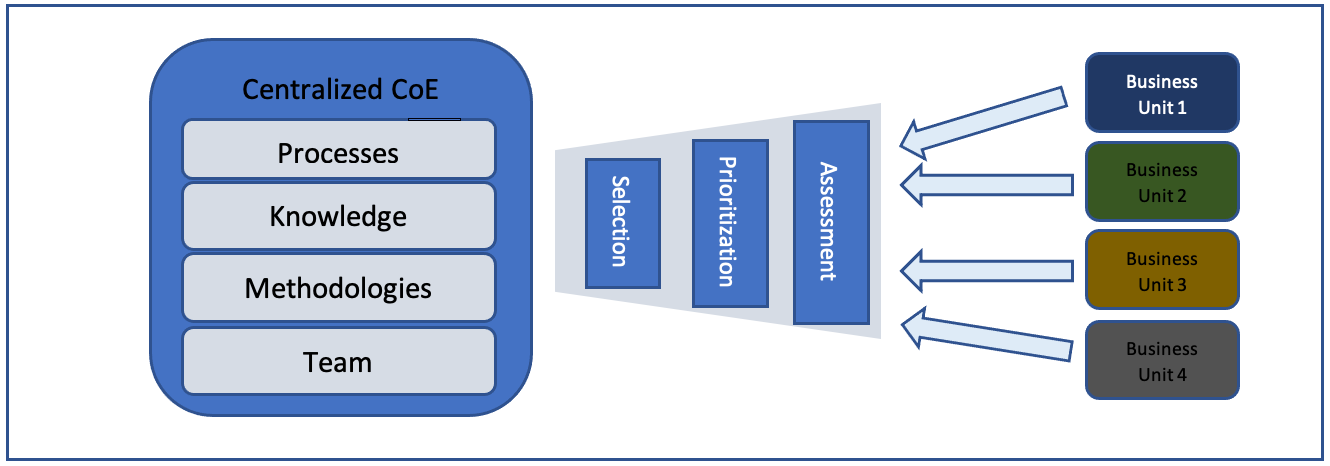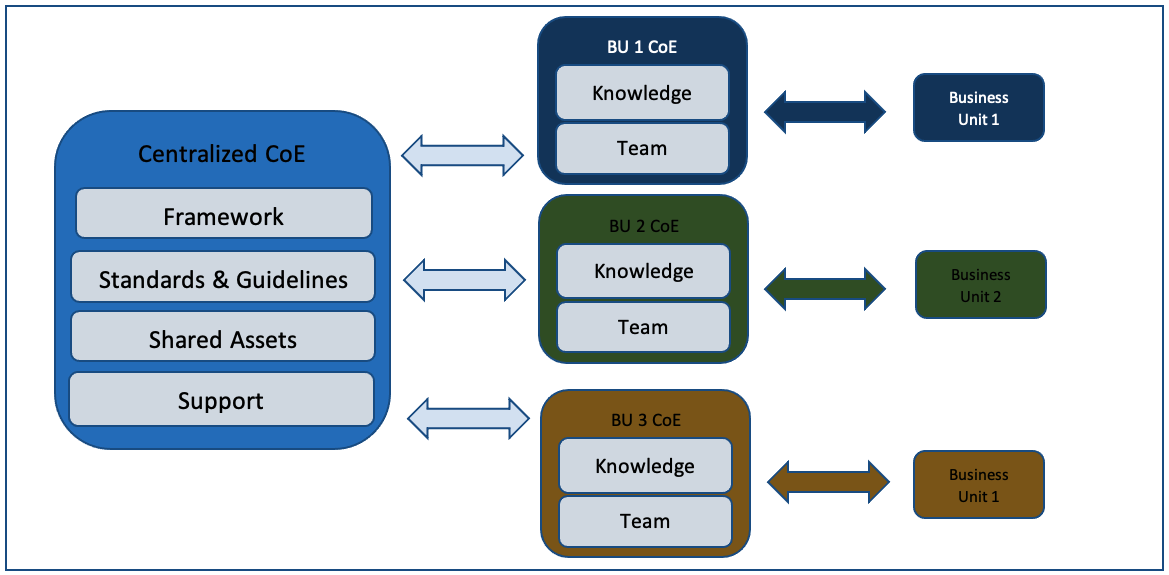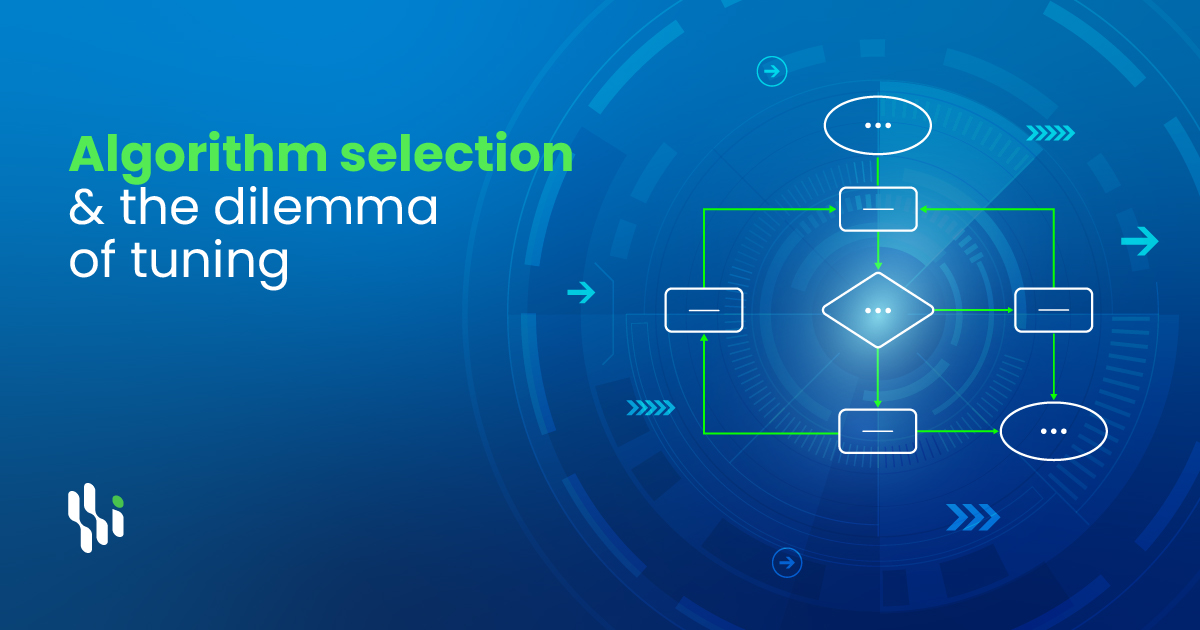

Part 2: The First step in creating a Machine Learning & RPA CoE: Defining the Operating Model
A COE might take several forms. Depending on their maturity level, the majority of businesses will go through COE operational models iteratively.
Most firms start out with a centralized operating model and a cross-functional team that supports all business units at the beginning when maturity is lower. Key resources, frameworks, services, and technologies are centrally managed by this cross-functional team. A single COE may sometimes be sufficient to suit the enterprise’s needs.
When the cross-functional team reaches maturity, it uses a federated model to assign tasks to the business units. We have discovered that setting up a federated model with a central COE enables numerous business unit COEs if there are extremely specific demands that differ by business unit or area.
Centralized Operating Model
The COE may be the single point of contact for governance, enablement, technical standards, and delivery process for projects thanks to a centralized operating architecture. It can also serve as the enterprise’s resource for technology. As a result, the COE transforms into the cornerstone that supports projects and offers the enterprise’s fundamental components. It is centered on the key components of business value, team facilitation, technical excellence, and enterprise reuse.

The centralized operational model makes sure businesses are appropriately implementing their use cases and laying the groundwork. As a consequence, the COE helps project teams deliver their work and interfaces with existing corporate entities and processes to support vendor selection, project intake and management, project methodology, process optimization, and IT architecture and design.
Federated Operating Model
Scalability is crucial as the COE develops since Machine Learning & RPA projects are more in demand across the organization. By reorienting the emphasis from creating and launching a COE to operationalizing a COE, the federated approach facilitates scalability. With this transition, the COE’s position is now one of project success facilitator rather than command and control. As a result, the COE transfers authority to the COEs of the business units. These consist of:
- Maintains knowledge of corporate assets and processes
- Owns business process specific framework
- Provides specific business knowledge
- Manages specific programs and rollout
- Coordinates with project teams
However, the COE continues to have the following abilities:
- Owns essential frameworks and elements
- Makes and keeps standards, guidelines, and best practices
- Keeps the global shared asset repository up to date
- Provides project teams and businesses with specialized services.

So an organization can specialize its COE services and boost the effectiveness and accountability of its business units by using a federated model. This promotes the enterprise-wide scalability and delivery success of Machine Learning & RPA projects.

